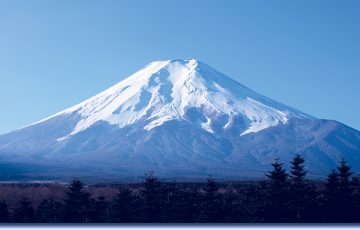 Eco is the catchphrase that serenades this era’s consciousness, and given the urban density of Japan – and the alarming rate of climate change – it is one that cannot be stressed enough. In response to this impending crisis, Prime Minister Hatoyama made climate change one of his foremost topics, and at the UN summit in Copenhagen, environment minister Sakihito Ozawa made an ambitious target of cutting carbon emissions 25% from 1990 levels by the year 2020.
Eco is the catchphrase that serenades this era’s consciousness, and given the urban density of Japan – and the alarming rate of climate change – it is one that cannot be stressed enough. In response to this impending crisis, Prime Minister Hatoyama made climate change one of his foremost topics, and at the UN summit in Copenhagen, environment minister Sakihito Ozawa made an ambitious target of cutting carbon emissions 25% from 1990 levels by the year 2020.
Japan’s corporations in various industries are making energy-efficient and environmentally conscious products, not only to decrease environmental impact, but also to reduce energy consumption as Japan suffers from economic downturns. Post-war Japan has often tended toward environmental destruction to clear land for buildings. Add this to the fact that households are the fastest growing source of CO2 emissions and predominant consumers of water. These factors have led to a burgeoning interest among Japanese consumers in eco-housing and efforts to create a lifestyle that reduces the carbon footprint of their homes.
The government launched an incentive program in March 2010, making people buying new houses or condominiums that built between December 8, 2009 and December 31, 2010 eligible to receive 300,000 “eco points.” For example, houses that feature double-pane windows can receive between 2,000 and 18,000 eco points. These points can be exchanged for products, such as local specialties, including fruit or seafood, and coupons that are worth 1 yen per point, or they can be donated to environmental groups.
Not only does this encourage consumers to renovate their homes to include energy-saving products, or buy/ build environmentally friendly homes, it also encourages economic growth since housing is linked to other industries. Ultimately, it is predicted that this eco point program will be worth 400 billion yen – a much-needed boost, considering new housing applications dropped to 788,000 in 1990, which is the biggest slump in over 40 years, and haven’t improved since.
 But what exactly is it that makes a house “eco”? In short, eco-housing features sustainable building practices and utilizes technology and resources that focus on renewability. In doing so, it minimizes the household’s negative impact on the environment and finds a harmonious way to coexist with nature. Eco-housing takes on many guises. It can be as simple as covering the walls and roofs with plants to reduce heat or using alternative, ecologically sound materials, or as sophisticated as encompassing the entire architecture of the house, such as tree houses and sunken houses. Eco-housing can be utilized in individual houses, kit homes, or entire communities.
But what exactly is it that makes a house “eco”? In short, eco-housing features sustainable building practices and utilizes technology and resources that focus on renewability. In doing so, it minimizes the household’s negative impact on the environment and finds a harmonious way to coexist with nature. Eco-housing takes on many guises. It can be as simple as covering the walls and roofs with plants to reduce heat or using alternative, ecologically sound materials, or as sophisticated as encompassing the entire architecture of the house, such as tree houses and sunken houses. Eco-housing can be utilized in individual houses, kit homes, or entire communities.
Eco-buildings are less demanding on energy and therefore more economical, but the main incentive for most homeowners to have an eco-house will probably be to create a safe home that ensures good health for the entire family. Usually eco-homes don’t look particularly different from conventional ones since most people want the comforts of modern-day living with options that are easy to implement.
Eco-design also emphasizes a connectedness with nature, and provides a nurturing environment – one that considers the spiritual demands of modern living and promotes good psychological well-being.
Eco-designers consider the materials, how they are made, and their inherent toxicity as well as their origins and whether purchasing them will benefit the local economy. This is just as essential as investigating how they are brought to the site, how much ecological impact there is when obtaining them, and how durable they are likely to be. The lifespan of the materials greatly affects how much energy and work is invested in the building.
Japan has traditionally been an extremely ecologically conscious country, due to the fact that there has been a need to conserve energy in this nation bereft of natural resources. Building materials were usually renewable and local such as straw, timber, paper, and clay. Over time, Japanese society has changed, becoming more Westernized. The newer generations have different predilections and tastes, caused both by physiological and aesthetic changes. A few salient examples include departure from the traditional Japanese diet resulting in larger body sizes, an increased expectation of thermal heat, and a tendency to sit at tables rather than on tatami mats, in addition to the changes in aesthetics brought on by increased exposure to international sensibilities. Additionally, it is no longer as commonplace as it once was to have extended families under the same roof. Plus, privacy is tantamount with such high-density housing.
Whilst modern apartments might be comfortable for young Japanese, they are more detrimental to the environment than their predecessors’ dwellings. However, the main problem with traditional housing is that it is not resilient to natural disasters such as earthquakes. Urban building codes in many instances prohibit traditional wood buildings, and houses need to be earthquake proof. This has led to traditional housing being replaced by more environmentally taxing modern versions that are often abysmally designed.
 In response to this, several companies have made an effort to emphasize eco-sensibility in their products. There are also entire villages promoting the ethos of environmentally kind living. One such place is the Koishikawa Eco Village in Bunkyo-ku, Tokyo. Each home features rooftop gardens, solar power generators, and is made of durable materials such as enforced concrete. The wallpaper and domestically produced wood floors are considered safe for both the environment and body.
In response to this, several companies have made an effort to emphasize eco-sensibility in their products. There are also entire villages promoting the ethos of environmentally kind living. One such place is the Koishikawa Eco Village in Bunkyo-ku, Tokyo. Each home features rooftop gardens, solar power generators, and is made of durable materials such as enforced concrete. The wallpaper and domestically produced wood floors are considered safe for both the environment and body.
Electronics giant Sanyo is selling all-electric houses that have solar panels and lithium ion batteries, as well as prefabricated houses with solar power systems, backed up by 1.57-kilowatt battery systems for rainy days. The houses, which cost about 350,000 dollars, will qualify for a 28,000 dollar subsidy. Similarly, Sekisui house launched the ECO-life Model series, which has clever features such as rainwater tanks and a bathwater recycling system that stores water for flushing toilets. They boast usage of building materials that minimize emissions of formaldehyde.
Homebuyers looking for inspiration should be sure to check out the Panasonic Eco Ideas House in Odaiba, which showcases their newest products in an environmentally friendly showroom. Visitors can peruse the house, which is comfortable all year round and has virtually zero CO2 emissions by integrating energy-efficient appliances. A combination of fuel cells, solar power generators, and batteries will create, supply, and store the home’s energy.
The building uses materials that have high insulation performance, and a sophisticated ventilation system using natural wind passages. CO2 emissions are reduced by having appliances that reduce waste – for example, the washing machine halves water consumption by simply tilting its drum. Sensors track people’s movements and offer heating and cooling accordingly. The intelligent fridge learns the users’ sleep patterns and goes into sleep mode when it doesn’t expect to be opened.
Given that people want to live in an environmentally conscious way without sacrificing their lifestyle and comfort – yet have very little time to invest in huge projects – new gadgets and appliances that use logical and simple ideas are surely thhe best option for those wanting to lessen environmental impact. Until the paradigm shifts to the point where eco-friendly construction becomes the norm, and not an anomaly that exists in a showcase, the home-purchasing consumer has a responsibility to the environment to look into energy-saving options. Moreover, most people should be aware of what their house does to their family, and not just to their wallets.Being ecologically friendly is by no means a step backwards in lifestyle – architects, engineers, and builders are integrating traditional construction techniques with technology. More than simply being an act of social responsibility for conscientious consumers, in an age of necessity, eco-living will surely be the way of the future.
Story by Manami Okazaki
From J SELECT Magazine, July 2010















Recent Comments